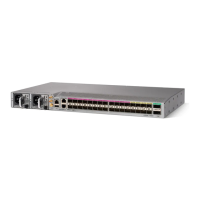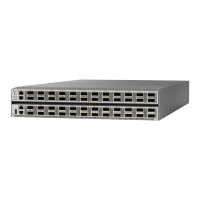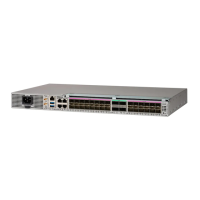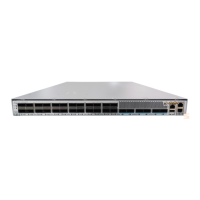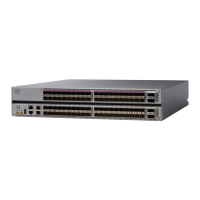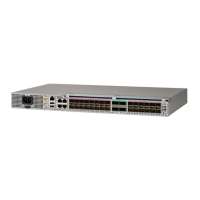CHAPTER 4
Connect Router to the Network
•
Guidelines for Connecting Ports, page 35
•
Connect to the Console Port, page 36
•
Connect to the Management Ethernet Port, page 38
•
Creating the Initial Router Configuration, page 39
•
Installing and Removing Transceiver Modules, page 41
•
Connecting Interface Ports, page 49
•
Maintaining Transceivers and Optical Cables, page 50
Guidelines for Connecting Ports
Depending on the chassis and installed line cards, you can use Quad Small Form-Factor Pluggable Plus
(QSFP+), QSFP28, SFP, SFP+, and RJ-45 connectors to connect the ports on the line cards to other network
devices.
To prevent damage to the fiber-optic cables that can separate from their cables, Cisco recommends that you
keep the transceivers disconnected from their fiber-optic cables when installing the transceiver in the line
card. Before removing such a transceiver from the router, remove the cable from the transceiver.
To maximize the effectiveness and life of your transceivers and optical cables, do the following:
•
Wear an ESD-preventative wrist strap that is connected to an earth ground whenever handling transceivers.
The router is typically grounded during installation and provides an ESD port to which you can connect
your wrist strap.
•
Do not remove and insert a transceiver more often than is necessary. Repeated removals and insertions
can shorten its useful life.
•
Keep the transceivers and fiber-optic cables clean and dust free to maintain high signal accuracy and to
prevent damage to the connectors. Attenuation (loss of light) is increased by contamination and should
be kept below 0.35 dB.
◦
Clean these parts before installation to prevent dust from scratching the fiber-optic cable ends.
Hardware Installation Guide for Cisco NCS 5500 Series Fixed-Port Routers
35

